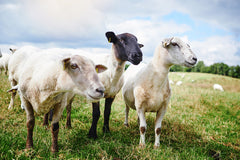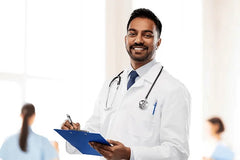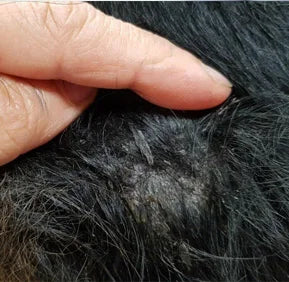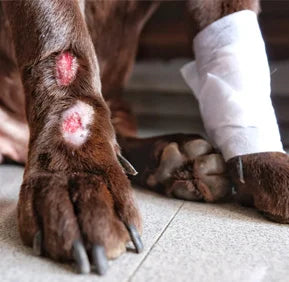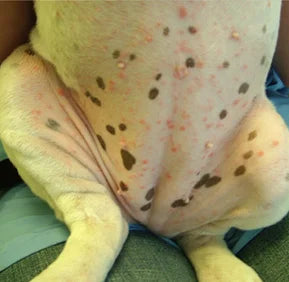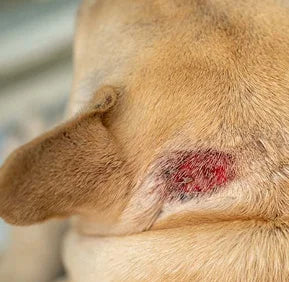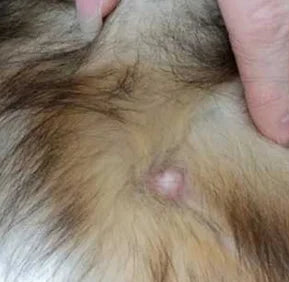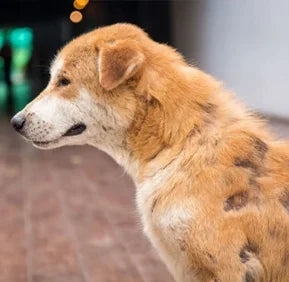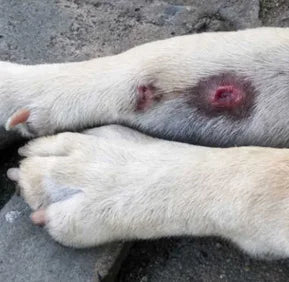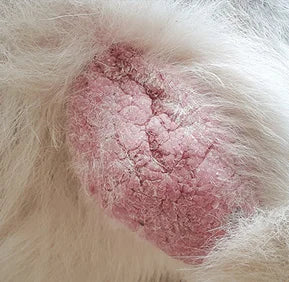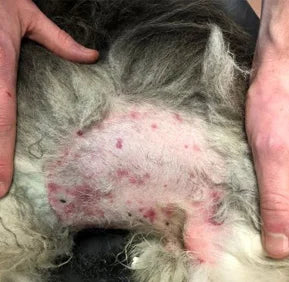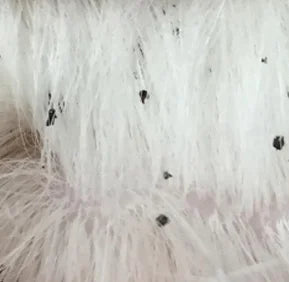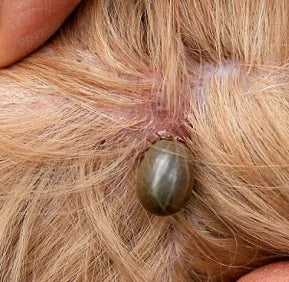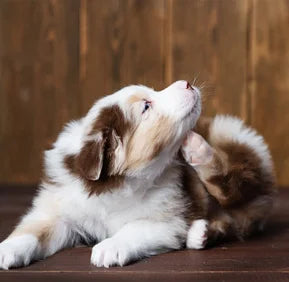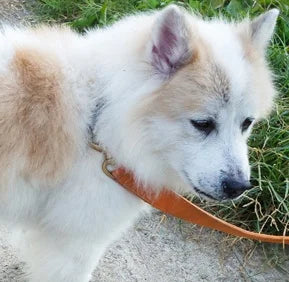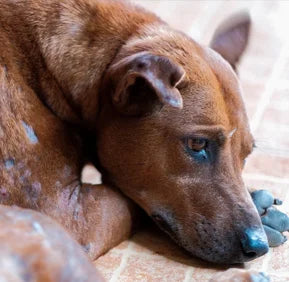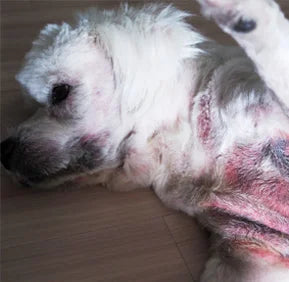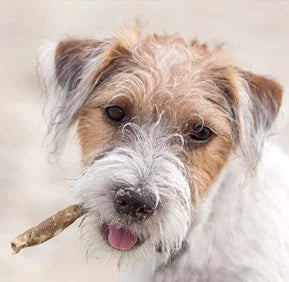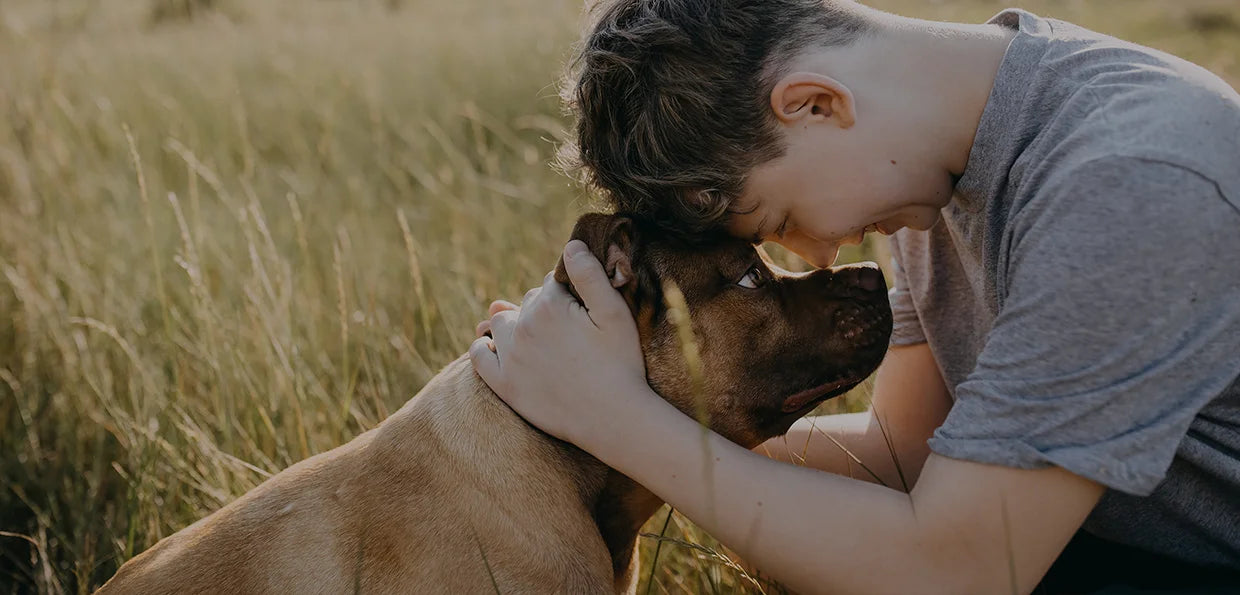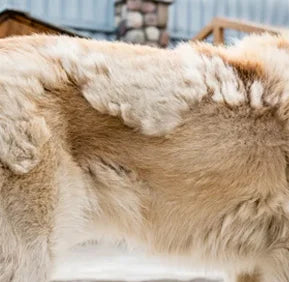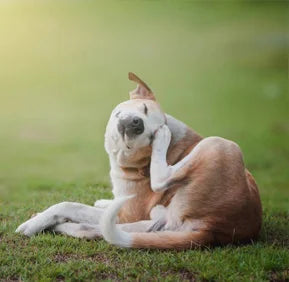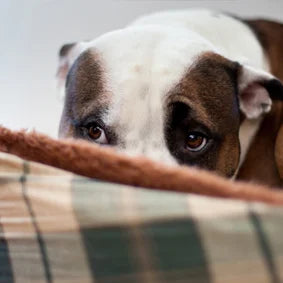The sound of a dog constantly scratching or licking can be as irritating as nails on a chalkboard. But don’t blame your pooch for these bad habits; a skin condition is probably the culprit. Possible causes range from parasites to allergies to underlying ilinesses.
Following are some of the most common canine skin problems:
-
Folliculitis
Superficial bacterial folliculitis is an infection that causes sores, bumps, and scabs on the skin. These skin abnormalities are easier to see in short-haired dogs. In long-haired dogs the most obvious symptoms may be a dull coat and shedding with scaly skin underneath. Folliculitis often occurs in conjunction with other skin problems, such as mange, allergies, or injury. Treatment may include oral antibiotics and antibacterial ointments or shampoos.
-
Colour or texture changes
A pet’s skin colour or coat texture change can be a warning sign of several common metabolic or hormonal problems. They can also result from an infection or other skin disorder. Usually, a simple blood test can identify the underlying cause. Be sure to ask your veterinarian about any significant changes to your dog’s coat.
-
Impetigo
Another type of bacterial infection, impetigo is most common in puppies. It causes pus-filled blisters that may break and crust over. The blisters usually develop on the hairless portion of the abdomen. Impetigo is rarely serious and can be treated with a topical solution. In a small number of cases, the infection may spread or persist.
-
Dry, flaky skin
Dry, flaky skin can be a red flag for a number of problems. It’s @ common symptom of allergies, mange, and other skin diseases. But most often, dry or flaky skin is nothing serious. Make sure you are feeding Fido high-quality food. Like people, some pets simply get dry skin in the winter.
-
Seborrhea
Seborrhea causes a pet’s skin to become greasy and develop scales (dandruff). In some cases, it’s a genetic disease that begins when a pet is young and lasts a lifetime. But most pets with seborrhea develop the scaling as a complication of another medical problem, such as allergies or hormonal abnormalities. In these cases, it is vital to treat the underlying cause so that symptoms do not recur. Seborrhea itself can typically be treated with certain medicated shampoos.
-
Acral Lick Granuloma
Also called acral lick dermatitis, this is a frustrating skin condition caused by compulsive, relentless licking of a single area, most often on the front of the lower leg. The area is unable to heal, and the resulting pain and itching can lead the pets to keep licking the same spot. Treatment includes discouraging the dog from licking, either by using a bad-tasting topical solution or an Elizabethan collar. Also, ask your dog’s vet whether a medication like a topical or corticosteroid might help.
-
Impetigo
Another type of bacterial infection, impetigo is most common in puppies. It causes pus-filled blisters that may break and crust over. The blisters usually develop on the hairless portion of the abdomen. Impetigo is rarely serious and can be treated with a topical solution. In a small number of cases, the infection may spread or persist.
-
Ringworm
Despite its name, ringworm is not caused by a worm but by a fungus. The term ring” comes from the circular patches that can form anywhere but are often found on a dog’s head, paws, ears, and forelegs. Inflammation, scaly patches, and hair loss often surround the lesions. Puppies less than a year old are the most susceptible, and the infection can spread quickly between pets in a kennel or to pet owners at home. Various anti-fungal treatments are available.
-
Skin Tumours
If you notice a hard lump on your dog’s skin, point it out to your vet as soon as possible. Dogs can develop cancerous tumours in their skin. The only way to confirm a diagnosis of cancer is to biopsy the tumour. If the lump is small enough, a veterinarian may recommend removing it entirely. This can yield a diagnosis and treatment in a single procedure. For tumours that have not spread, this may be the only treatment needed.
-
Shedding and hair loss (alopecia)
Anyone who shares their home with pets knows that they shed. How much shedding is normal depends on the breed, time of year, and environment. But sometimes stress, poor nutrition, or illness can cause a pet to lose more hair than usual. if abnormal or excessive shedding persists for more than a week or you notice patches of missing fur, check with your veterinarian.
-
Hot Spots
Hot spots, also called acute moist dermatitis, are small areas that appear red, iritated, and inflamed. They are most commonly found on a pet’s head, hips, or chest and often feel hot to the touch. Hot spots can result from a wide range of conditions, including infections, allergies, insect bites, and excessive licking and chewing. Treatment consists of cleansing the hot spot and addressing the underlying condition
-
Mange (mites)
Mange is a skin disorder caused by tiny parasites called mites. Sarcoptic mange, also known as canine scabies, spreads easily among dogs and can also be transmitted to people, but the parasites don’t survive on humans. The symptoms include intense itching, red skin, sores, and hair loss. A dog’s ears, face, and legs are most commonly affected. Demodectic mange can cause bald spots, scabbing, and sores, but it is not contagious between animals or people. Treatment depends on the type of mange.
-
Immune Disorders
In rare cases, skin lesions or infections that won’t heal can indicate an immune disorder in your pet. One of the best known is lupus, a disease that affects pets and people. Lupus is an autoimmune disorder, meaning the body’s immune system attacks its own cells. Symptoms include skin abnormalities and kidney problems. It can be fatal if untreated.
-
Fleas
Fleas are the bane of any pet owner. You may not see the tiny insects themselves, but flea droppings or eggs are usually visible in a dog’s coat. Other symptoms include excessive licking or scratching, scabs, and hot spots. Severe flea infestations can cause blood loss and anaemia and even expose your dog to other parasites, such as tapeworms. Treatment may include a topical and/or oral flea killer and a thorough cleaning of the pet’s home and yard.
-
Anal Sac Disease
As if dog poop weren’t smelly enough, pets release a foul-smelling substance when they do their business. The substance comes from small anal sacs, which can become impacted if they don’t empty properly. The hallmark of impacted anal sacs is a dog scooting his bottom along the ground. Other symptoms include biting or licking the anal area. A vet can manually express full anal sacs, but in severe cases, the sacs may be surgically removed.
-
Ticks
Ticks, like fleas, are external parasites that feed on the blood of their hosts. You can spot a tick feeding on a dog with the naked eye. To properly remove a tick, gently pull it straight out. Twisting or pulling too hard may cause the head to remain lodged in the pet’s skin, which can lead to infection. Place the tick in a jar with some alcohol for a couple of days, and dispose of it once it is dead. In addition to causing blood loss and anaemia, ticks can transmit Lyme disease and other potentially serious bacterial infections.
-
Constant Itching
Unreasonable scratching of ears, skin, paws, or their abdominal region
-
Hair Loss
Hair loss in dogs can happen due to an infestation by parasites such as mites, lice, or fleas.
-
Mange Disease
Mange is caused by microscopic mites that invade the skin of otherwise healthy animals. The mites cause irritation of the skin, resulting in itching, hair loss, and inflammation.
-
Fungal Infection
Due to low immunity, fungal organisms have the ability to attack normal skin and hence cause infection.
Tips for preventing Skin Problems in Pets
Preventing skin problems in pets involves regular grooming, proper nutrition, and a clean environment. Brush your pet regularly, use a mild shampoo, and ensure a balanced diet. Keep your pet hydrated, control parasites, and manage allergens. Regular vet check-ups and a pet-friendly living space contribute to overall skin health. If issues arise, consult a vet promptly for proper care
Symptoms of Skin Infection in pets
-
Bacterial and fungal infections
Skin infections in pets can be caused by bacteria or fungi. Symptoms may include redness, inflammation, itching, hair loss, and the presence of pustules, scabs, or crusts on the skin.
-
Allergic Dermatitis
Allergic dermatitis refers to inflammation of the skin due to an allergic reaction. Symptoms can include redness, itching, swelling, hives, or the development of skin lesions
-
Ruff Hairs
If your pet's fur appears rough or coarse, it could indicate a skin problem. Skin infections or underlying conditions can affect the texture and quality of the hair.
-
Yeast Infection
Yeast infections can occur in pets, particularly in areas with skin folds or moisture. Symptoms may include red, inflamed skin, itching, a yeasty odour, and sometimes discharge or crusting.
-
Seasonal Shedding
Seasonal shedding is a natural process for many pets. However, if you notice excessive or abnormal shedding accompanied by signs of skin irritation, it could indicate an underlying infection.
-
Itching or Scratching
Pets with skin infections often exhibit itching or scratching behaviour. They may excessively groom, bite, lick, or scratch themselves in an attempt to alleviate the discomfort.
-
Saliva Staining
Excessive licking or chewing can cause saliva staining on the fur or skin. This can occur due to allergies, skin infections, or other irritations.
-
Redness or Inflammation
Skin infections can cause redness or inflammation in affected areas. The skin may appear irritated, swollen, and may feel warm to the touch.
-
Greasy or Flaky Skin with an odour
Skin infections can disrupt the normal balance of oils on the skin, resulting in greasiness or flakiness. The presence of an unpleasant odour can indicate bacterial or yeast overgrowth on the skin
-
Skin Lesions
Skin infections can lead to the development of lesions, sores, or ulcers on the skin. These may be open, oozing, crusted, or scabbed over.
-
Rubbing on the Carpet
Pets may rub or scratch themselves against carpets or other surfaces when they have skin problems. Itchy or irritated skin can lead to this behaviour.
-
Unpleasant Odour
Skin infections can produce an unpleasant odour, which can be caused by the presence of bacteria, yeast, or other microorganisms on the skin.
Trusted by Veterinarians
“As a veterinarian, I am thrilled to endorse Dr. Goel Vet Pharma’s homeopathic products for our furry friends. Their commitment to advancing homeopathic veterinary medicine is evident in the exceptional quality of their products. The innovative solutions they provide have significantly enhanced our ability to care for our animal patients, ensuring optimal health outcomes. I highly recommend Dr. Goel Vet Pharma’s products to pet parents for their unwavering dedication to the well-being of pet animals and the invaluable support they offer to the veterinarian community.”
– Dr. Sakshi Sharma (B.V.sc. & A.H. M.V.Sc , NET)
Treat your Pet from Skin Infection problem with Dr.Goel’s Dermisule
DERMISULE for pets is the best remedy for dogs suffering from different skin conditions like eczema, allergies, rashes, lesions with hair loss, redness, dry, scaly, pus, or bloody discharge. Specific or general lesions or spots as in Mange disease can also be improved.








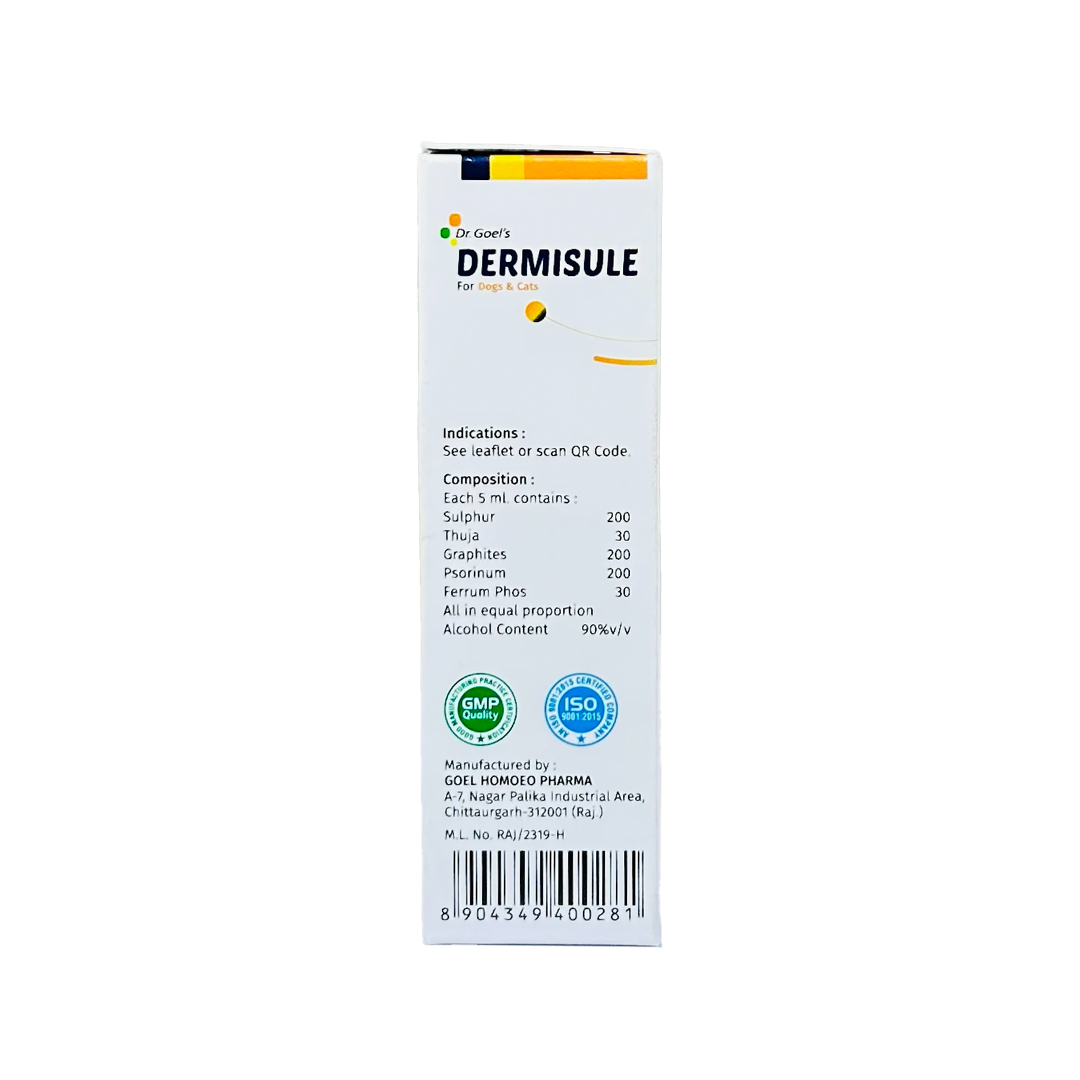
Me & My Skin & Coat
GRANULES FOR PETS ( For Skin Problems in Pets )
Me & My SKIN & COAT Pet Supplement is a peerless medicine for our pet’s skin and coat. It helps reattain natural skin and coat after injuries, chaps, cracks, scaly eruptions, or any acute skin lesion in pets. It is highly recommended to treat hair fall for any reason.
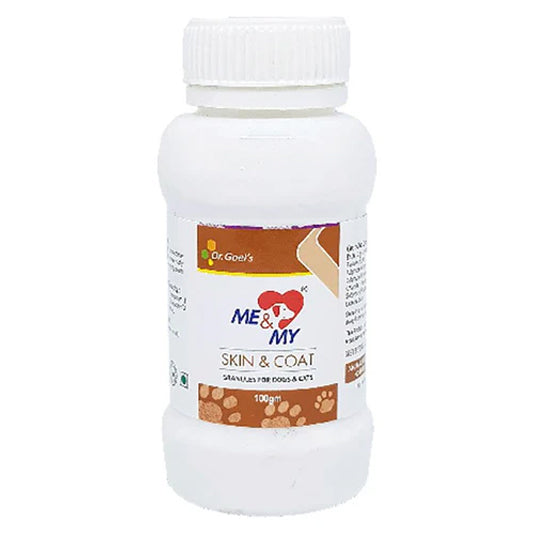
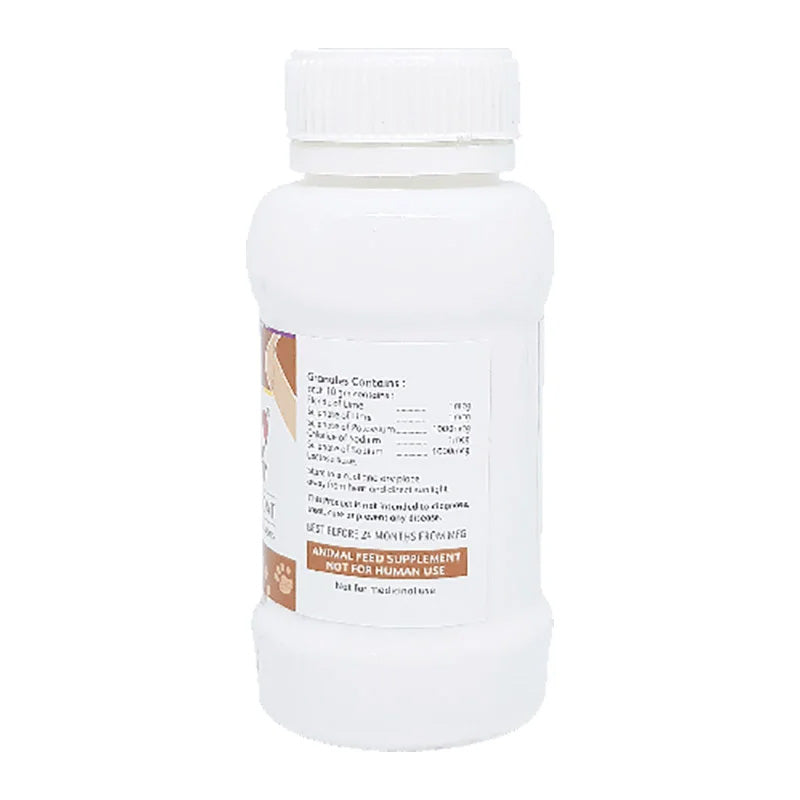
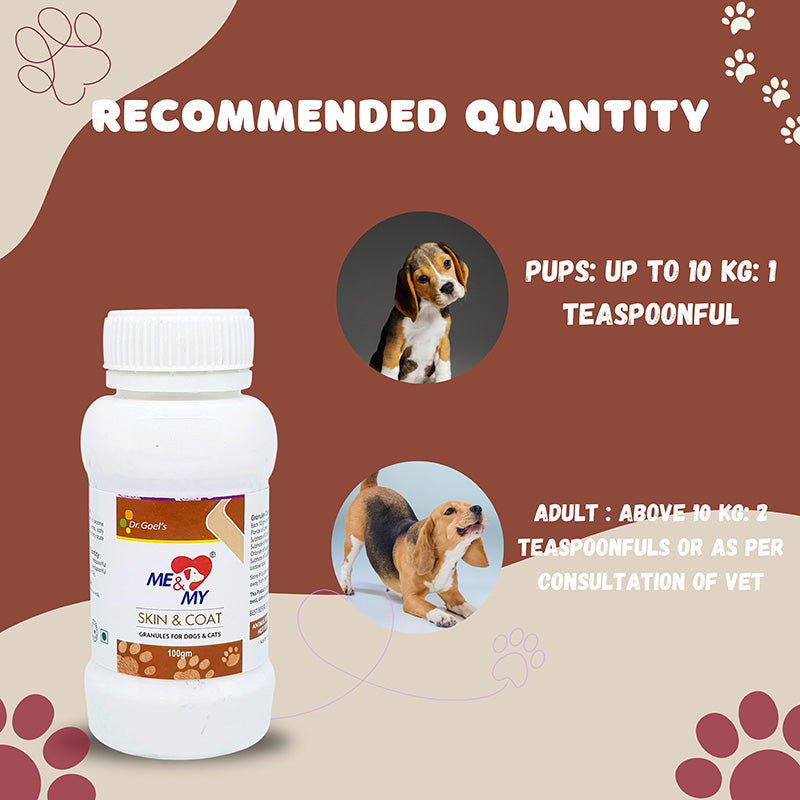
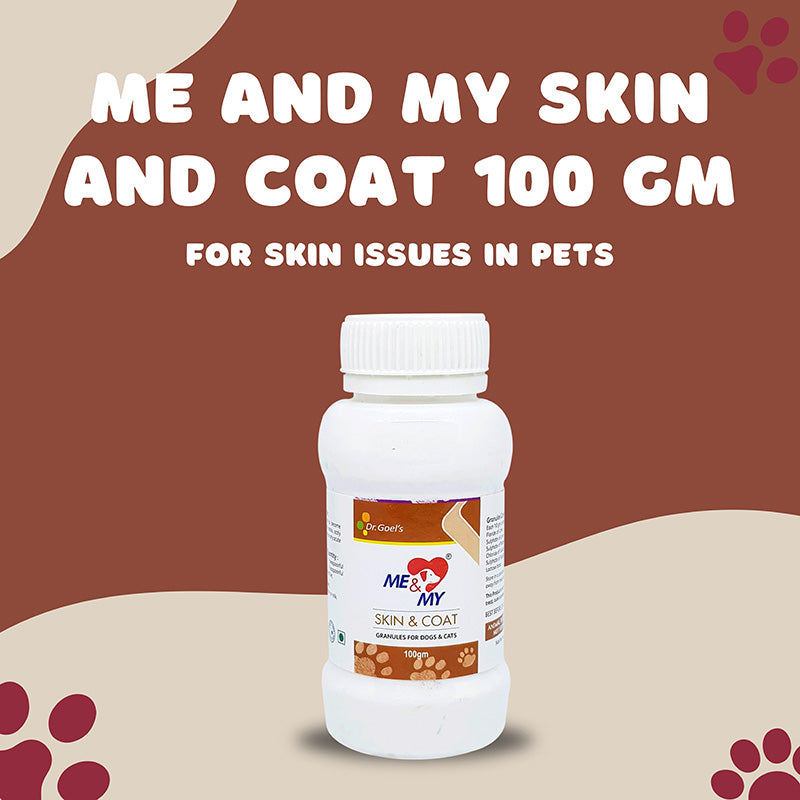
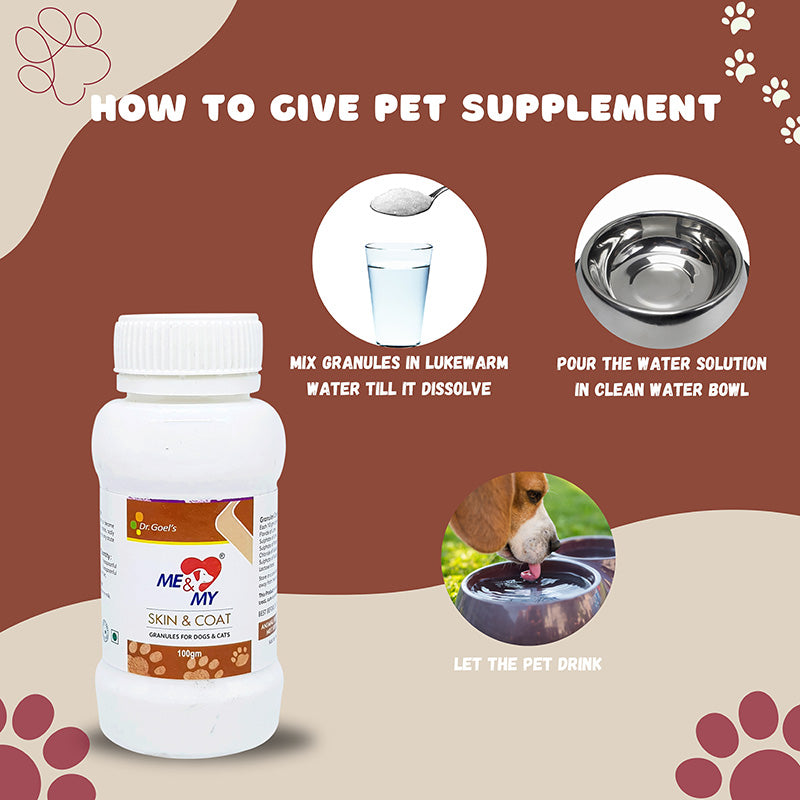
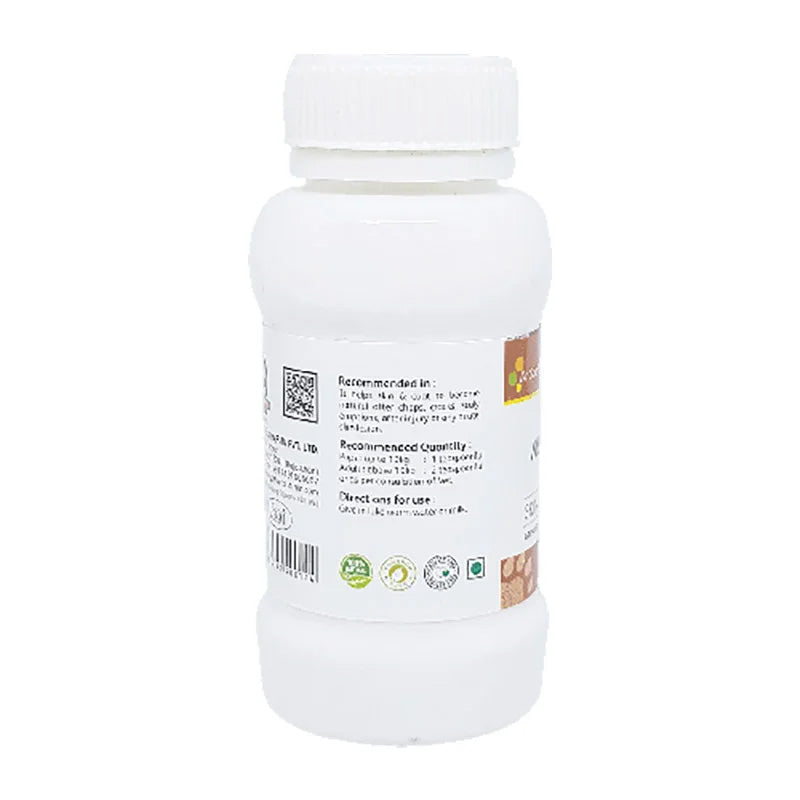

Blog posts
Frequently Asked Questions
I have bought, Dermisule and me and my pet coat, what are the doses? And how to give.
Large breeds 20-25 drops x thrice 1.5-2 tsp x once of me and my skin and coat Small – 10-15 drops // 1 tsp adjusted accordingly
Mam mera itching bhaut hoti hai pls tell me the cure
Dermisule + me and my skin & coat
Do u have any medicine to treat licking n biting problem....i have a 9 yr old lab he had developed lick granuloma which we have been treating frm past more than 2 years... its get healed completely but again n again he licks and bites and redevelops it in the same leg at different locations...we have been bandaging and using e collar from years now continously but he doesnt stop biting n licking....pls suggest anything that can prevent him frm biting his own wound??
Use Dermisule along with go heal spray
How to take care of a stray dog in the street having severe mange, dermatitis etc.
Dermisule drops x thrice a day and me and my skin and coat granules once a day can be started
How to manage hair shedding?
Spot and eliminate any food allergies, seasonal shedding is normal for dogs. Dermisule drops + me and my skin and coat granules to promote better skin health and fur growth.
I hav two GS they hav hair loss on their tail side its almost 2-3 months it scratches them
Tail region is quite a common area for flea infestation causing flea- associated dermatitis. For dermatitis- Dermisule / me and my skin and coat granules
How to treat hotspots in dog?
Dermisule / me and my skin and coat
Can i use line sulphur dip as a treatment for fungal infection in cats
Yes. Dermisule drops along with me and my skin and coat works well
I hav two GS they hav hair loss on their tail side its almost 2-3 months it scratches them
Use Dermisule for your pet @ 15 drops x 3 times a day
Can I add Dermisule with all these supplements?Also my kittens are getting treated for mange like ivermectin injections and gamma benzene lotion. Can I give Dermisule with this treatment?
Keep atleast half an hour distance between medicines and dermisule drops if possible.
Do you have any medicine for skin related also?
Dermisule
my dog has itching ear,paws,neck,back,spine everywhere plz suggest a medicine?
Dermisule drops + me and my skin and coat granules
Dermisule whats the dosage to be given to dogs?
5-20 drops for adults
Me dog ko skin problem hai saree din itching kr ta raheta hai pls tell
Dermisule + me and my skin and coat granules
my pet child is always having a major skin problems please suggest some treatments?
Dermisule @ 15 drops x 3 times a day Me and my skin and coat granules 1 teaspoon a day
My pet has redness in paws and sometimes does a lot of itching also she has lots of hairfall ?
Use Dermisule along with me and my skin and coat granules.
My dog has running nose also scratches his ear a lot but do you recommend? For 6 months lhasa.
I hv beagle he has atopic dermatitis n food he is eating hypoallergenic plz suggest You could use Dermisule for your pet @ 15 drops x 3 times a day
My dog vomiitted red blood with a worm and also have skin issues
Use Wormisule for your pet to take care of the worm issues and Dermisule fir skin related problems
My 8yr old female shihtzu has hyper pigmentation on belly and scratches.. only red skin..
This is due to dermatitis . To control the red skin and itihing use Dermisule for your pet
My pet is limping his leg while walking, any suggestions what to do?
Dermisule works best for it
My dog is having this discoloration on nose and all the parts that she's licking.. what might be the cause?
Mange infestation could be a possible reason




